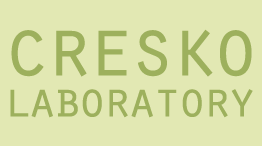Software

Stacks is a software pipeline for building loci out of a set of short-read sequenced samples. Stacks was developed for the purpose of building genetic maps from RAD-Tag Illumina sequence data, but can also be readily applied to population studies, and phylogeography.
The Synteny DatabaseThe Synteny Database is a system built to detect conserved synteny -- the tendency of neighboring genes to retain their relative positions and orders on chromosomes over evolutionary time (synteny: syn, same; tene, thread). Given a source genome and an outgroup genome the Synteny Database can detect regions of conserved synteny within the source genome (paralogons), or between the source and outgroup genomes. The system was built with special care to detect paralogons originating from whole-genome duplication. The Synteny Database is meant to aid the study of the evolutionary history of gene families across multiple lineages.

